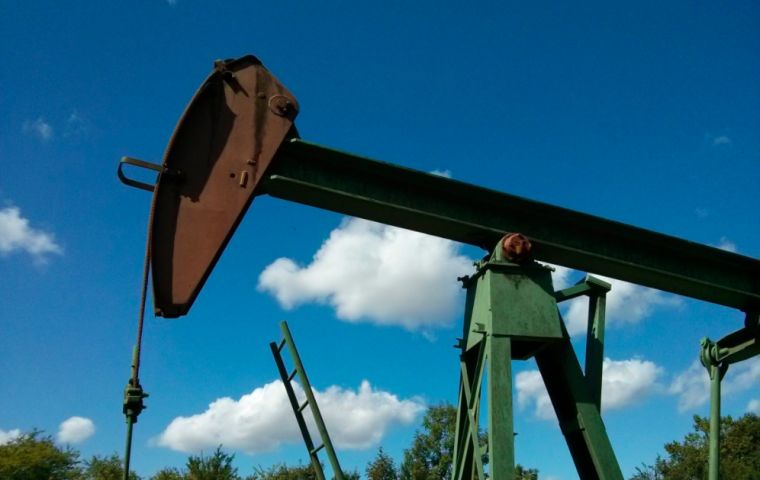MercoPress. South Atlantic News Agency
Oil industry's recovery is incomplete but sustainable
 In some major oil production nations, supply is no longer as far ahead of demand as it was a few months ago
In some major oil production nations, supply is no longer as far ahead of demand as it was a few months ago Throughout the summer, oil’s recovery from its devastating crash has looked somewhat dubious. While the price of crude rebounded somewhat, it did not wholly regain its pre-pandemic strength. And while the nations of OPEC+ put measures in place to cut production and close the gap between supply and demand, certain nations involved hinted at the reluctance to keep cuts in place. These factors, coupled with the lingering potential of fresh “waves” of the coronavirus, have kept us from being overly optimistic about the state of oil.
Now, however, while oil’s recovery remains incomplete, it’s at least beginning to look sustainable. Prices recently hit a five-month high, which is welcome news both within the industry and among investors around the world. But it’s the context around this high mark of the summer that makes it particularly encouraging.
Maybe most important is that in some major oil production nations, supply is no longer as far ahead of demand as it was a few months ago. We remarked on U.S. crude inventories recently, and it appears that those inventories have fallen enough to allow the supply/demand relationship to even out somewhat. Specifically, the American Petroleum Institute announced that its crude stock had fallen by four million barrels in the prior week — compared to 2.9 million that were expected. This indicates some degree of stabilization in the market that could make price recovery more sustainable.
Another key factor in any discussion of oil’s recovery is that we can now look back and see a few months’ worth of stable value. Since the beginning of June, movements in oil’s trading price have stayed within a tight range, but have ticked up with little interruption. The gains have been modest, but consistent, without any subsequent crash, or really any volatility whatsoever. This doesn’t necessarily mean that oil is poised to climb higher. But it does indicate that the market has established a new base (somewhere around USD 40 per barrel) from which to continue a gradual recovery.
Finally, there have also been encouraging signs regarding the aforementioned price cuts by OPEC+ nations. Recent analysis indicated that compliance with oil output cuts for the month of July was somewhere between 95% and 97%. The job is not done, and it’s expected that production cuts will be recommended with similar severity moving forward. But compliance that strong gives the market its best chance to recover by keeping supply from disastrously outstripping demand around the world.
Relative to what we’re used to from years past, oil remains in a fairly weak position. Demand has yet to pick up to a meaningful degree in much of the world, and OPEC+ agreements can still feel tenuous. Thus, we maintain that oil’s recovery is still far from complete. The signs just discussed, however, show a certain consistency and sustainability to the recovery effort that we couldn’t see in previous months. If in fact oil is to regain its former strength, it appears to be on the road toward doing so.




Top Comments
Disclaimer & comment rulesCommenting for this story is now closed.
If you have a Facebook account, become a fan and comment on our Facebook Page!